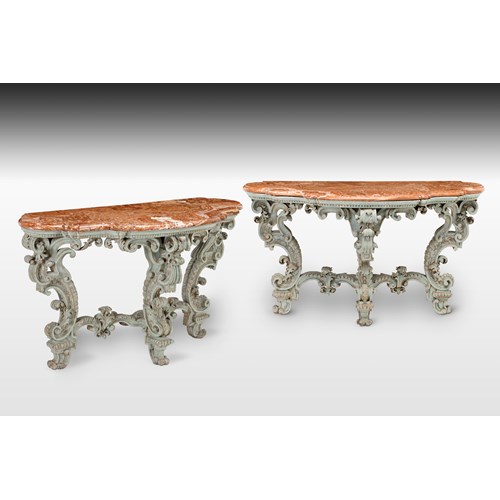Jacopo Maria Foggini
The Mattias De Medici Blue Boys
Date Florence 1650s
Period 1600-1750
Medium Carved, Gilt, Giltwood, Lacca, Lapis, Polychrome-painted, Poplar, Tempera, Woods, Glass, Brass
Dimension 146 cm (57¹/₂ inches)
A pair of Florentine Baroque polychrome lacca wood sculptures with glass eyesHere attributed to Jacopo Maria Foggini (c.1620–1684). Florence, third quarter of the seventeenth century.
Date: Florence 1650s
Period: 1600-1750
Medium: Carved, Gilt, Giltwood, Lacca, Lapis, Polychrome-painted, Poplar, Tempera, Woods, Glass, Brass
Dimension: 146 cm (57¹/₂ inches)
Provenance: Possibly Mattias De Medici apartments in Pitti Palace, Florence before 1659.
Pietro Accorsi collection in Turin before 1968
French private collection until 2021.
Literature: Enrico Colle, Il mobile in Italia dal Cinquecento all'Ottocento. Milano Electa 2009, p.70-71, t.58-59.
Exhibition: Related other sculptures still existent in Palazzo Pitti, documented created in the second half of the seventeenth century, as well as in the couple of South American figures holding a Mexican Tonala jar created a little bit later for the Ginori family(see photo)
More artworks from the Gallery









